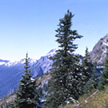| |
Report: Watershed Condition Report for Twig Creek
| Report Documents
|
|
|
| |
| Map Plotfiles
|
-
No files of this type available
|
| |
| Data Files
|
-
No files of this type available
|
| |
| Digital Map Files
|
|
|
| |
| Image Document
|
-
No files of this type available
|
| |
| Video Files
|
-
No files of this type available
|
| |
|
All Documents
|
|
|
| Contact
|
|
-
If you have any questions on the information presented, or require additional report data or attachments, please contact the Report Contact
|
|
|
This watershed condition assessment and report has been completed on the Twig
Creek watershed for Riverside Forest Products Limited (RFPL). The purpose of the
assessment is to address resource agency concerns with forest harvesting and road
construction activity shown on the current (2000 - 2005) Forest Development Plan
(FDP) for Tree Farm License (TFL) 49.
|
Author: Dobson Engineering Ltd.
|
|
|
Date Published: Mar 2001
|
Report ID: 8285
|
Audience: Government and Public
|
Twig Creek is a tributary to the Salmon River upstream of Westwold, BC with a
watershed area of approximately 4,300 ha. Steep confined lower channel reaches
leading up to a broad elongated mainstem valley dominated by marshlands and
beaver ponds characterize the lower and middle watershed area [Map - Appendix A].
Tributaries to the mainstem and marshland area include Jupiter Creek entering from
the southeast, and a larger un-named system entering from the northwest, defined as
Upper Twig Creek for this review. Early harvesting in the Twig watershed was confined to Interior Douglas Fir stands
on lower slopes adjacent to the Salmon River. More recent development began in the
mid-1980's with greenwood harvesting located throughout the middle and upper
watershed area. Since the mid-1990's beetle salvage activity has dominated forest
development plans focused mainly on middle elevation pine stands on both the
southeast and northwest sides of the elongated mainstem valley. Considerable salvage
activity is planned in the current FDP in addition to some greenwood development. In 1998 Forsite Consultants Ltd completed an Integrated Watershed Restoration Plan
(IWRP) on the entire Salmon River watershed . The IWRP included an Interior
Watershed Assessment Procedure (IWAP), Sediment Source Survey (SSS), Channel
Assessment Procedure (CAP) and Access Management Plan (AMP). Site-specific
sediment source and channel stability issues were identified in the Twig watershed
and risk rated for the purpose of directing follow-up restoration and rehabilitation
work. It is important to note that the IWRP process was designed to identify past forest
development related disturbance in a watershed or other identified area and make recommendations for remedial action. The IWRP process and component parts are
not intended nor designed to comment on or direct future forest development activity
(i.e. they are not forward-looking exercises). It is also important to note that RFPL had concerns with the IWRP identification of
past forest development related effects on the Salmon River watershed, generally, and
in particular the standards by which risk priority ratings were derived and the implied
cause and effect relationship between noted areas of concern and past harvesting and
road construction activity . These concerns lead to few if any restoration prescriptions
being developed for IWRP priority sites in the Twig watershed. In short, priority
demands on Watershed Restoration Program (WRP) funds were determined to be
higher in other areas of the Salmon River watershed or elsewhere within the RFPL
operating area. With resource agency concerns in mind regarding IWRP priorities and planned forest
development activity, the objective of this report is to answer the following questions: 1) What were the results and recommendations of the various component
assessments within the IWRP, and can they be used to help define the current
condition of the watershed and/or help guide future forest development and
restoration planning in Twig Creek? 2) Where are the IWRP priority sites, what effect have they had on the condition
of the watershed, and what restorative measures might be required to mitigate
detrimental effects? 3) What is the current condition of the watershed with respect to water quality,
water quantity and the cumulative effects of past forest development on Twig
Creek and the larger Salmon River? 4) What are the anticipated effects of planned forest development and what
recommendations can be provided to mitigate potential detrimental effects on
the water resource?
|
Report Type
Subject
| |
Region - Thompson-Nicola |
| |
Watershed Groups - 128 - South Thompson |
| |
Water Information - Watershed Assessment Studies |
| |
|
|
|
|
Warranty Disclaimer
This information is provided as a public service by the Government of British Columbia, Box 9411, Victoria, British Columbia, Canada V8W 9V1.
This Web site and all of the information it contains are provided "as is" without warranty of any kind, whether express or implied. All implied warranties, including, without limitation, implied warranties of merchantability, fitness for a particular purpose, and non-infringement, are hereby expressly disclaimed.
Limitation of Liabilities
Under no circumstances will the Government of British Columbia be liable to any person or business entity for any direct, indirect, special, incidental, consequential, or other damages based on any use of this Web site or any other Web site to which this site is linked, including, without limitation, any lost profits, business interruption, or loss of programs or information, even if the Government of British Columbia has been specifically advised of the possibility of such damages.
|
